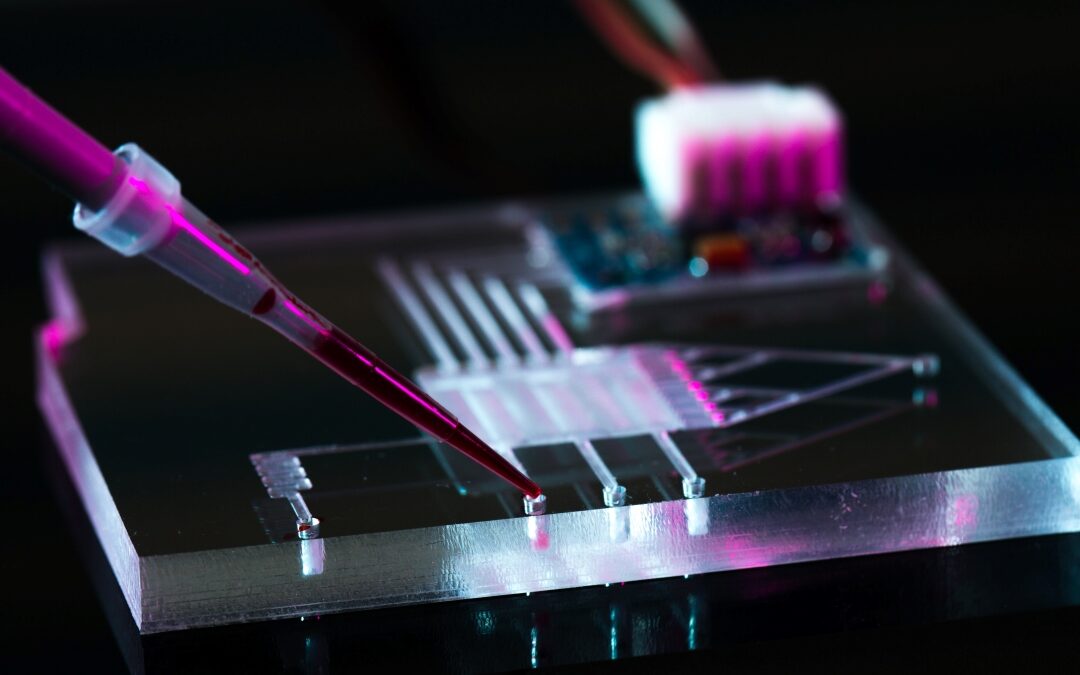Global Health Education at Rutgers: In this content series, Rutgers Global Health Institute explores global health coursework offered throughout Rutgers.
Course Title
Biomedical Technologies: Design and Development
Course Numbers
14:332:436:06 (undergraduate)
16:332:579:06 (graduate)
Instructor
Umer Hassan, PhD
Assistant Professor, Department of Electrical and Computer Engineering, School of Engineering
Core Faculty Member, Rutgers Global Health Institute
Course Description
This is an interdisciplinary course that introduces students to the field of biomedical technologies to address global health care challenges. Students learn fundamental concepts in the areas of bioelectrical engineering, point-of-care sensors, fabrication, micro/nano technologies, microfluidics, data processing, and global health care applications. The course will provide a detailed background on the engineering principles used for biosensor development. Sensor fabrication and characterization of the point-of-care biosensors will be taught. The course also will also introduce students to on-chip sample processing, surface functionalization techniques, label-free detection of biomolecules, instrumentation, and data processing. The course will highlight the development of personalized predictive systems for health care using machine learning techniques. The course also includes case studies of point-of-care sensors. The course is cross listed for senior undergraduates and starting graduate students. (Source: Biomedical Technologies Design and Development – Fall 2022 Syllabus)
Q&A with Prof. Hassan
In this course, how do you incorporate concepts of global health equity, in terms of the value and role of biomedical technologies to help vulnerable populations in limited-resource settings have better health outcomes?
At the very beginning of this course, we discuss that most of the world’s health-related challenges, including health equity, require an interdisciplinary approach to address them. We don’t need experts only from biomedical engineering. We also need public policy professionals, physicians, entrepreneurs, politicians, and the general public, among many others. However, biomedical technologies can play a central role in achieving health equity because they influence and lead to the development of new, economical products that will bring health care costs down while also improving health and health care outcomes.
Does your course address biomedical technology development from a business perspective?
Specifically, yes. The course includes lessons on how to commercialize biomedical technologies as well as the federal regulatory processes that enable public translation of the technologies.
Beyond that, I teach students a need-based approach to developing new biomedical technologies. The central idea behind this approach is to first identify the health care need, and then we get in to learning about and experimenting with tools to innovate products to solve those needs.
We live in a capitalist society, so these dynamics intersect. Profit and value, or need, can’t be separated and, to a certain extent, should not be separated. The idea here would be to capitalize on our innovation culture to develop new products that will expedite our path to achieve health equity.
What are some examples of biomedical device applications that your students have envisioned as part of the course’s group project assignment?
The students work in groups of two to identify a global health need and propose a biomedical technology to address it. I provide examples of project ideas, but I really encourage the students to think of their own ideas based on what motivates them and what they’re interested in exploring.
Throughout the eight-week project period, they conduct a comprehensive literature review on the global health relevance of their idea and develop the experimental design framework, which includes a tentative fabrication protocol and list of experiments and optimizations needed. The final deliverable is an eight-page paper plus references. Past students’ proposals have included a microfluidic device for in situ waterborne pathogen detection and a biosensor for childhood acute leukemia.
Why do students take your course?
Students come with a spectrum of expectations. Some students want to learn more about interdisciplinary areas, while some are specifically interested in understanding and learning how to solve global health care challenges.
This journey enables them to appreciate and learn many things, including exposure to interdisciplinary areas and a greater understanding of global health care needs. Students also gain experience with developing an entrepreneurial mindset: how to identify the need and then come up with a solution.

